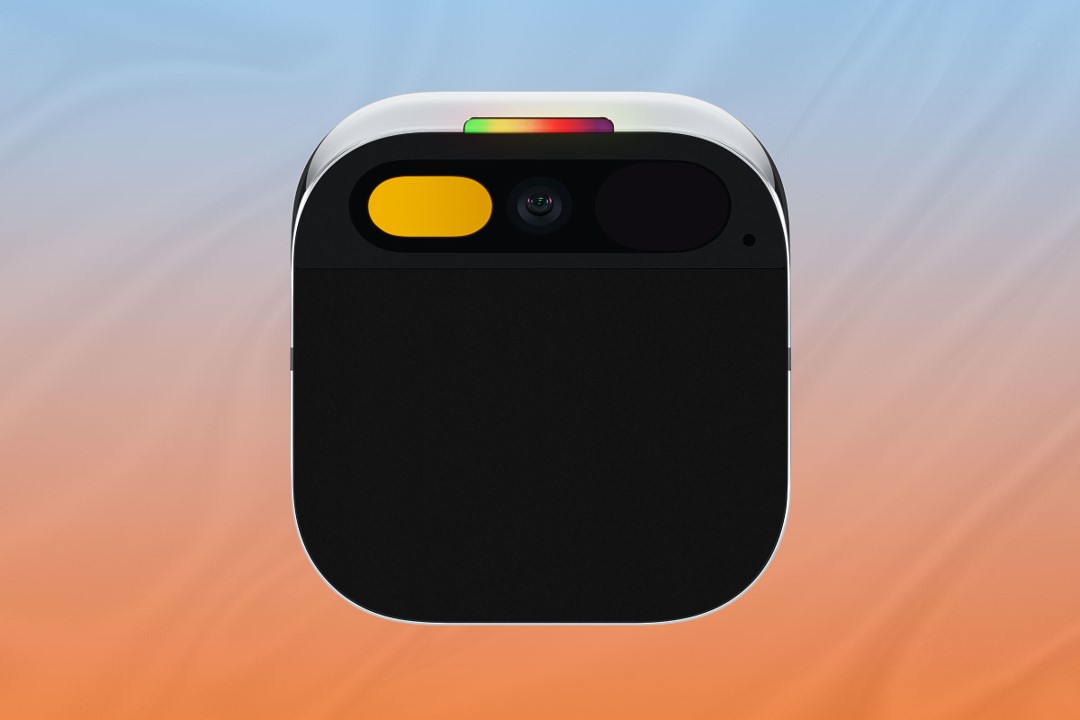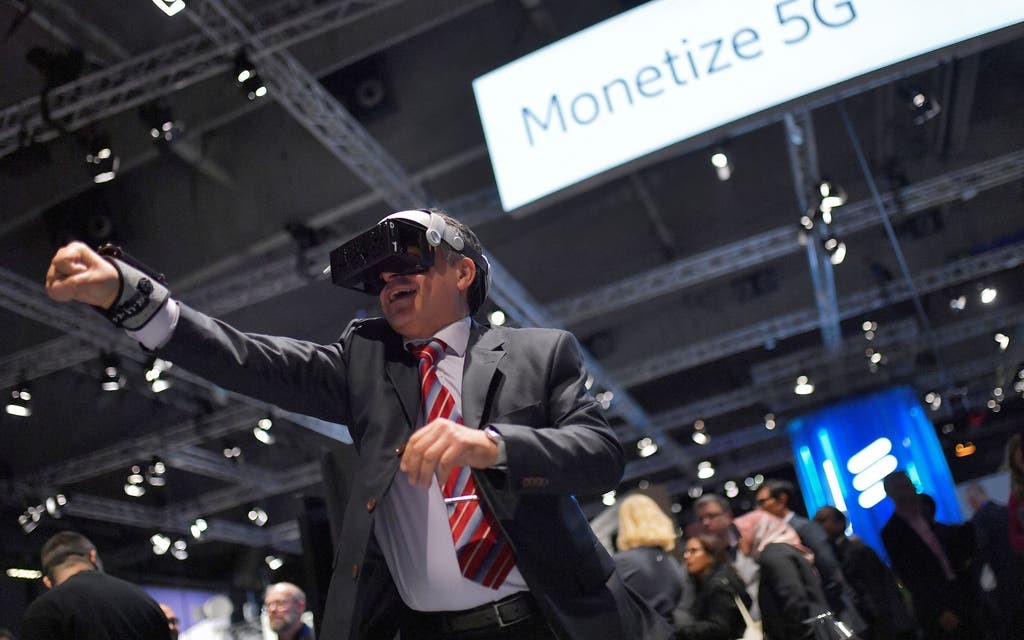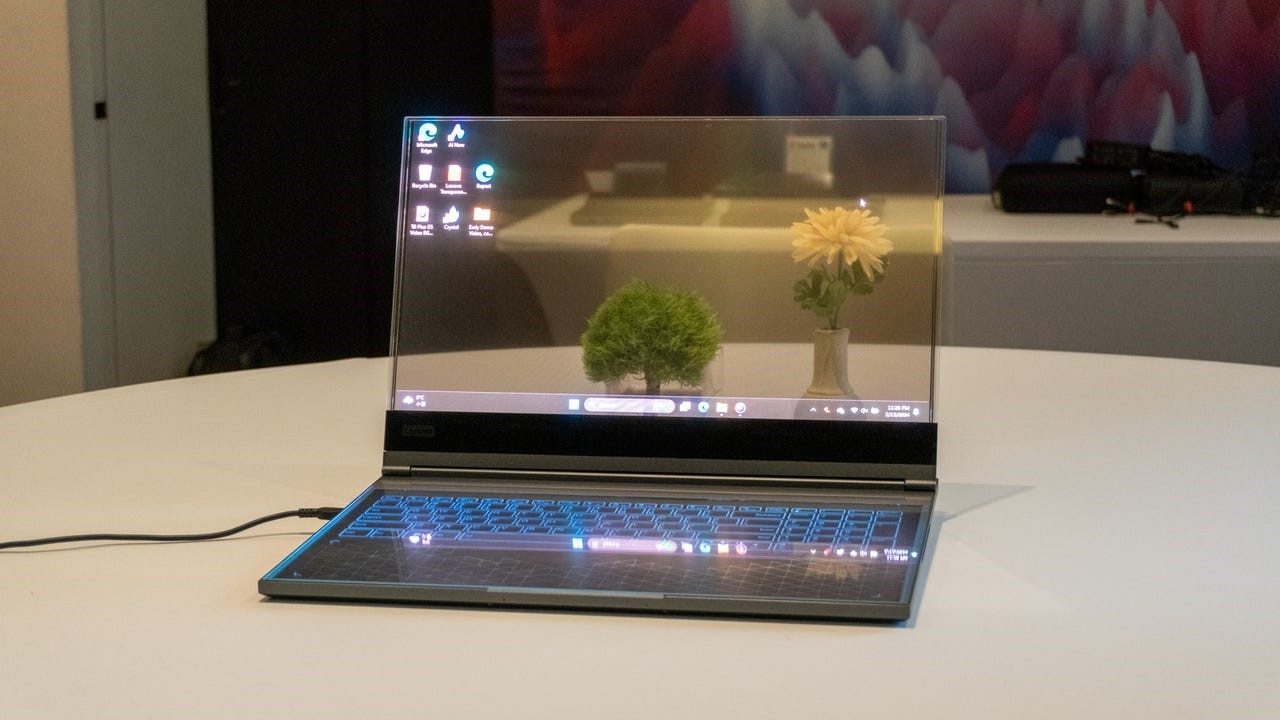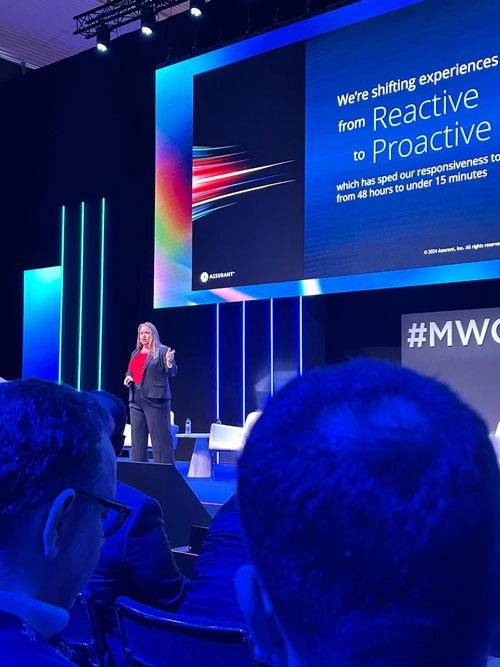AI was everywhere!
It felt like every hall, every stand and every panel discussion included some reference to AI. At the moment it feels like there is a general awareness amongst consumers that it’s coming; but very few are quite clear yet on the level of impact it will have on their everyday lives, and when we are likely to see noticeable changes.
 Mobile devices will be the next testing ground for the roll out of AI and will begin to offer more capability e.g., AI will be able to respond to notifications and apps on behalf of the user through monitoring activity and behaviour. It will know if the user is able to reply and create a suitable automated response.
Mobile devices will be the next testing ground for the roll out of AI and will begin to offer more capability e.g., AI will be able to respond to notifications and apps on behalf of the user through monitoring activity and behaviour. It will know if the user is able to reply and create a suitable automated response.
AI technology will be embedded into devices to support users. An example of this on show was the Humane AI pin. A small device that you can clip to clothes and accessories so acts as wearable AI which doesn’t depend on a smartphone or app. However, it offers all the functionality and capability you’d expect from a smartphone when it comes to calling, sending messages and listening to music.
5G Rollout
The success of rolling out AI across devices and networks depends on 5G adoption and deployment. 5G implementation did stall as a result of the Covid-19 pandemic but it’s expected by the end of the decade it will account for over half of mobile connections.
At the moment consumers tend to associate 5G with just getting faster broadband but benefits of 5G growth for consumers could be vast. Overtime it is expected to deliver an infrastructure which can play a pivotal role in activities like e-healthcare, smart cities, the connected car and automated manufacturing. It is expected to deliver better educational experiences reviving the way people learn. It will mean real time availability of the most incredible experiences without buffering.
What does this mean for our customers over the next few years? A likelihood that as the 5G infrastructure becomes more prevalent, more consumers will be keen to upgrade to devices and migrate to service providers that can support the technology better.
Better collaboration across the mobile ecosystem
This came up at the Insurance Innovators Summit too; there was an emphasis on telcos, service providers and infrastructure companies to work more collaboratively to increase/improve connectivity and deliver more automation. This can also bring more cost-efficiency and skills-sharing benefits to create a more comprehensive and sustainable eco-system.
Gadgets & technology which caught the eye...
 Augmented Reality Glasses – ability to make prescription glasses smart. Oppo showed a prototype model wherethe glasses had voice assistant technology
Augmented Reality Glasses – ability to make prescription glasses smart. Oppo showed a prototype model wherethe glasses had voice assistant technology- Realistic 4K holograms – these can be used at events and offer more body language capabilities
- Keyboard for smartphones – feels quite retro however it was observed that the screen keypad can block up to 40% or the vast majority of what the user needs to view
- Samsung Galaxy ring – wearable tech innovation showcased but no indication of price and launch date
- Whissp – app that makes it easier for consumers with disabilities and vulnerabilities to communicate through their connected devices
- Xiaomi 14 Ultra – described as a phone connected to a camera; switch from traditional approach of phones with cameras
- Lenovo’s transparent laptop – currently only a concept

- ZTE Pad II – ability to create items in 3D
- OEMs like Motorola delivering solution which make it easier to extend content between devices like Apple Sidecar
- More cost-effective foldable devices coming on the market from new players which will force the established OEMs to lower their prices
- Honor had an eye-tracking app which enabled user to move a car just with eye movements
- And not forgetting the flying car. Here is the interview with Alef Aeronautics CTO and Co-Founder, Konstantin Kisly.
Assurant colleagues sharing their insight and experience on stage
On the Monday our EVP & President for Global Connected Living and Assurant International, Biju Nair, took part in a panel discussion titled “Never Too Young to Lead”. 42% of the world’s population are now under 25 but very few hold positions as key decision makers within organisations delivering products and services which will have a major impact on the younger generations.
All panelists were unanimous in that there are amazing opportunities for creativity and the industries need to pull them in sooner rather than later. Gen AI became the prime topic of conversation with Biju placing a strong emphasis on “adapt and change” stating AI won’t take your job away, but someone who embraces AI and can use it effectively will! Being curious is key and willing to take technology head on can be the foundation for a successful career.
Biju re-iterated the benefits AI can bring and that it should not be feared, such as the support it can provide for people with disabilities and vulnerabilities when it comes to using smartphones and connected technology. The onus is on companies like Assurant to ensure it is used responsibly and maintain that it is all about making people’s lives easier. The three key takeaways that Biju gave for the younger generations looking to succeed in this industry were:
- Build good resilience; you won’t get everything right first time
- Be a constant student of communication
- Surround yourself with really smart people who you can delegate to
Sharing our experience of working with Gen AI
 On the Tuesday it was the turn of our SVP for Customer Experience, Deborah Battaglia, to take the stage. First of all, Deborah delivered the keynote speech for the session “The Customer Experience Revolution in the AI era”.
On the Tuesday it was the turn of our SVP for Customer Experience, Deborah Battaglia, to take the stage. First of all, Deborah delivered the keynote speech for the session “The Customer Experience Revolution in the AI era”.
While 97% of C-Suite executives think that Gen AI will drive transformation, less than a third are clear on the change impact.
Human connection is the foundation for AI strategy and is the best tool we’ve had at our disposal to drive better value for our partners and their customers. Since Assurant started adopting more AI for customer management, we have seen several shifts. The first being a greater desire for more choice and flexibility. Gen AI is supporting our agents by providing more prompts and responses enabling them to service customers faster and more efficiently. This has doubled productivity and increased customer satisfaction scores.
The second key shift is the rising expectations for better quality and making AI more proactive than reactive. Handling customer queries which may have previously taken 48 hours, can now be resolved in less than 15 minutes thanks to Gen AI.
What are the key learnings from Assurant’s move to Gen AI:
- Break the work down into tasks.
- Humanise your AI and ensure you’re engaging with the best and brightest people
- Harness the power of data
- Always use AI responsibly
Unlocking the Power of AI in the Telco Industry
Later on that day, Deborah joined a panel with leaders from the BT Group, Hewlett Packard and Deutsch Telekom to discuss how service providers can optimise the potential of AI to enhance the customer experience. Deborah shared examples of how Assurant had been leveraging AI for over a decade to unlock business growth, increase efficiency and revolutionise the customer experience.
The power remains with the agent. When interacting with customers via digital channels, they can choose to use Gen AI or manually respond. 80% are using Gen AI as they have the confidence in its ability. This makes life so much easier for our employees.
AI is being utilised in our Device Care Centres, using a system which diagnoses device faults more quickly and accurately. This enables us to keep more devices in circulation to help achieve our sustainability goals.
Tackling fraud – we have built AI around fraud flags to reduce false positives. This means customers can get through the process faster and only hamper those who are trying to play the system.
Dynamic claim fulfilment – analysing the customer’s individual circumstances, AI can propose the best resolution outcome in minutes which ultimately leads to the customer getting connected with their tech again really quickly.
Deborah’s closing remarks to the session were the companies who deploy AI with greater success are those who invest in areas which have the biggest impact. Getting agents on board and having a comprehensive AI ecosystem are a necessity. And ultimately if you can use AI effectively so that it gives your customers more time back in their busy days when they need support, you’re on the right track. Mistakes will be made along the way but it’s imperative you learn from them. You can watch the full session here - Unlocking the power of AI in Telco: From operations to innovation | TelecomTV.

